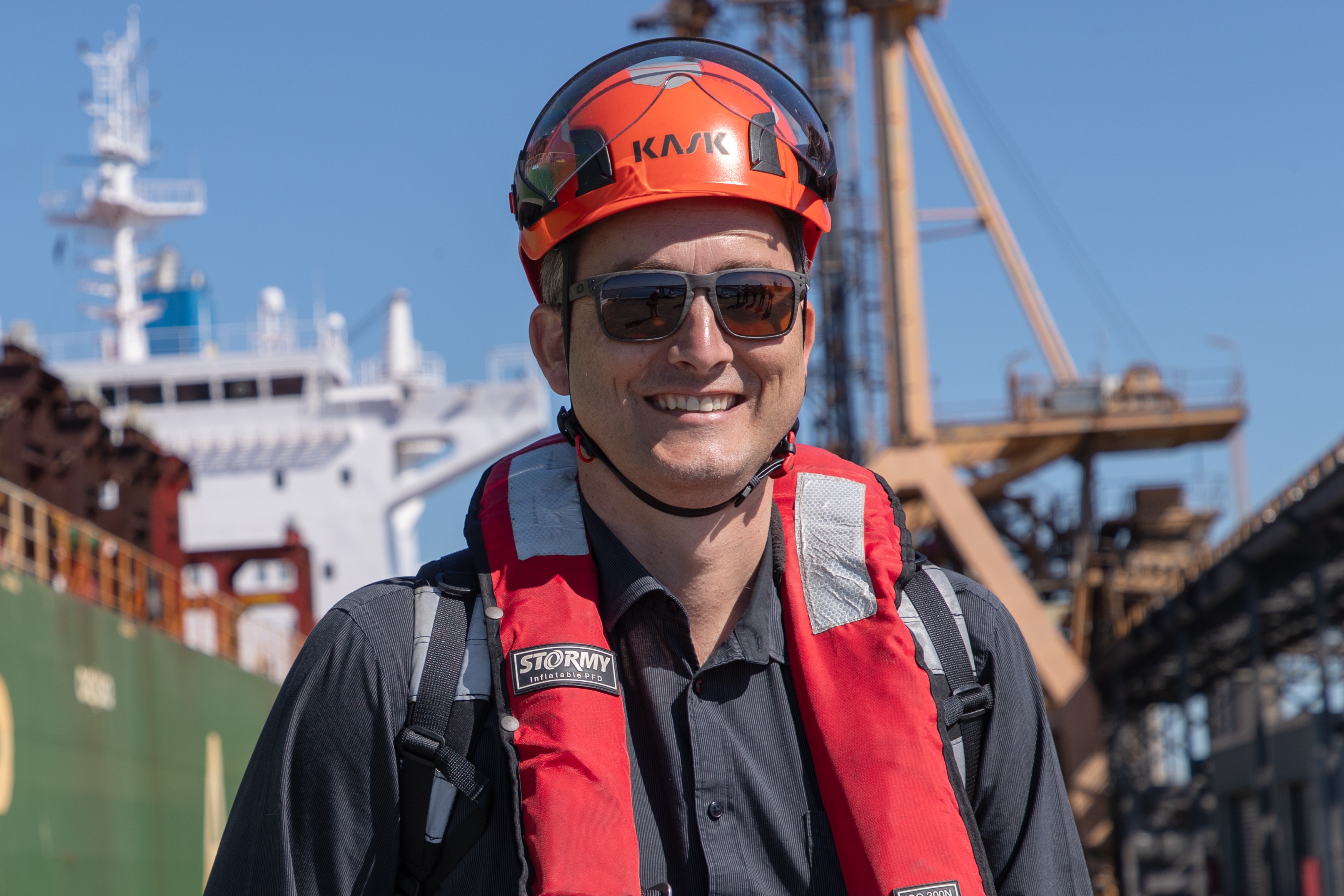A day in the life of a Port of Mackay Marine Pilot
As an island nation, over 98% of Australia’s trade moves through ports. At the heart of the trade supply chain are the North Queensland Bulk Ports Corporation (NQBP) marine pilots.
These highly skilled maritime professionals make sure the vessels carrying goods through our ports travel safely and efficiently.
Let’s look at a day in the life of an NQBP marine pilot at one of Queensland’s multi-commodity ports, the Port of Mackay.
Meet NQBP Manager Pilotage Services Luke Sorensen
Luke's journey began with a childhood visit aboard a tug, setting the course for a seafaring career that led him to become a marine pilot.
From his first command of the CSL Melbourne to managing pilotage services at NQBP, Luke's career has taken him all around the world.
“This early experience led me to a career at sea from the age of 17 until 29,” Luke said.
“During my time at sea, I decided I wanted to navigate ships in confined spaces and had a real interest in the manoeuvring of the ship rather than the running of them, so I pursued a career to become a marine pilot.
“I managed to get an interview with Maritime Safety Queensland, and I have been a marine pilot since.”

A Day in the Life
Every year Luke and our team of highly skilled marine pilots are responsible for safely bringing around 1,300 ships in and out of the ports of Mackay and Hay Point.
In Mackay, they travel four nautical miles out to sea via pilot boats to board incoming vessels. To get on board they climb a ladder that hangs over the side of a ship. This takes physical strength and skill to undertake - especially at night or in windy conditions.
Once on board, the first order of business is the Master Pilot Exchange (MPX) with the ship's captain. This crucial exchange sets the plan in motion for a safe and seamless arrival.
Using navigational tools and local knowledge, the marine pilot guides the vessel through the Port of Mackay's 180-metre-wide entrance, past landmarks like Slade Island, at a speed of around 5 knots. This may sound slow but imagine trying to manoeuvre a ship up to 200 metres in length.
Continuous communication with the tugs and the lines handling crew ensures a safe and efficient berthing with millimetre precision.
Lifelong dedication to training
Pilotage plays a vital role in protecting ships, our port infrastructure, and the marine environment, while connecting regional Queensland to the world through the facilitation of trade.
Our marine pilots undergo specialist training with us in addition to years of training at sea before being able to navigate a ship in and out of the Port of Mackay.
A pilot licence is restricted to levels categorised by the vessel's length and beam. To achieve each licence, the marine pilot must complete many solo piloted ships before they advance to the next level for training.
The highest licence at the Port of Mackay is level 1, meaning they can bring ships of any size in and out of the port.
To keep their skills up marine pilots also undergo regular training including simulations, manned models and observations.
Future marine pilots
Navigating a path to becoming a marine pilot is no small undertaking, especially considering the wealth of experience and study needed to get a pilot licence.
Securing a cadetship proved pivotal for Luke, providing the necessary sea time and educational support to work through the ranks. Through his cadetship, he was able to gain extensive seatime experience and certification as a watchkeeper on a ship, chief officer and eventually his Master’s ticket. From here, he was able to get his marine pilot licence.
Luke’s advice to aspiring marine pilots is clear - work hard, connect with experienced mariners, and gain valuable experience early on.
“As with any career you need to work and strive hard for what you want,” Luke said.
“Reach out and connect to mariners, they are all willing to share their experiences and learning.
“It’s not an easy career but if you set your goal and keep on task you will become part of a diverse and rewarding industry.”

